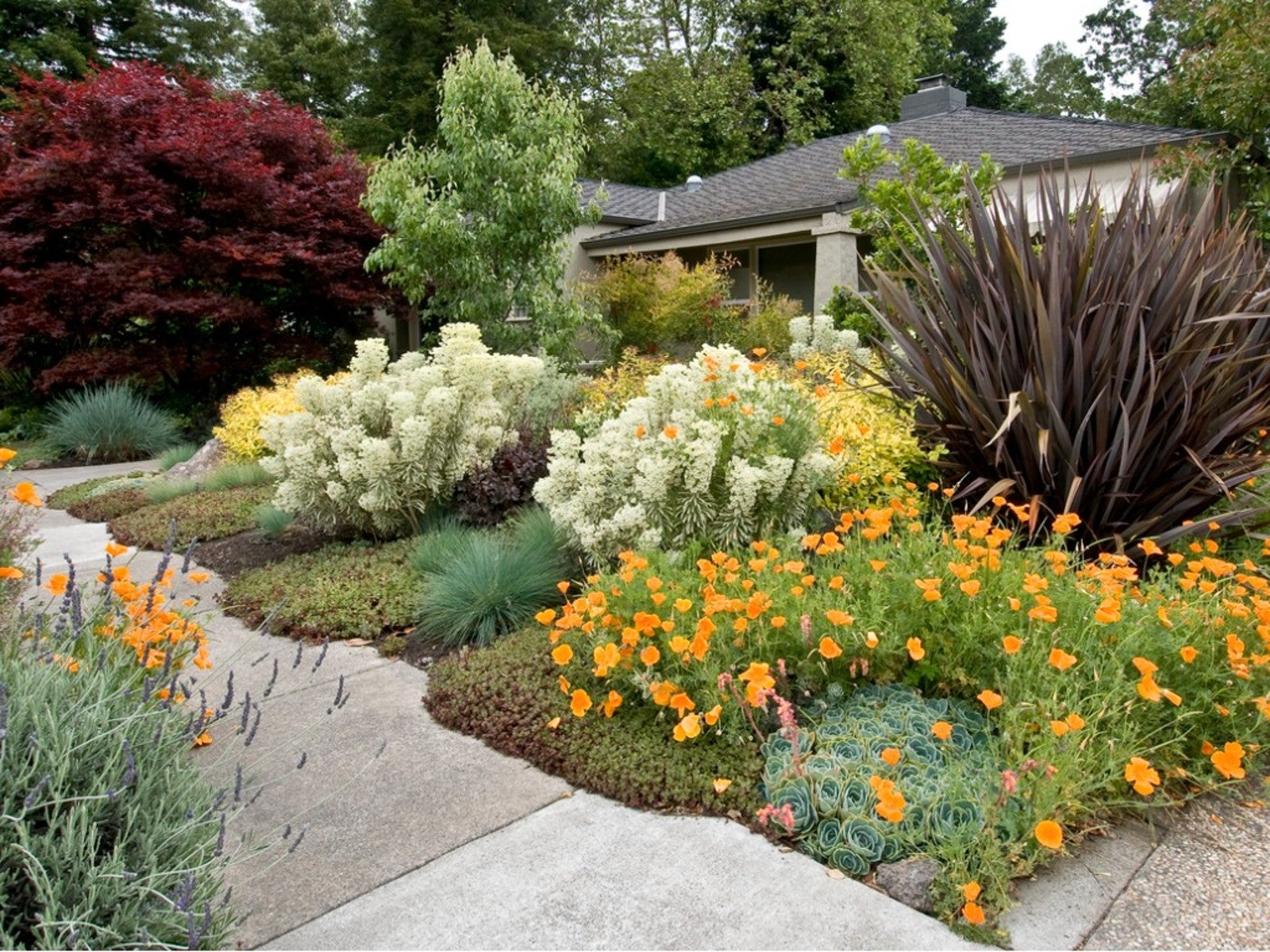Lawn Alternatives California And Nevada Gardeners Should Try


Smooth, clipped, green lawns used to be a highly desirable choice for a front lawn in California and Nevada. But with the continued drought, many gardeners are turning toward grass alternatives that require less water and less maintenance. California native grasses are becoming increasingly popular for Western gardens.
Lawns in the West
Many people know well-clipped, weed-free turf-grass as the “forever” standard for the American lawn. But history disproves this. This short, neat lawn was largely the result of the popularity of the game of golf, and it didn’t move into the backyards of residences until the development of the garden hose and sprinkler.
The standard was promoted by the American Garden Club that described the desired result as “a plot with a single type of grass with no intruding weeds, kept mown at a height of an inch and a half, uniformly green, and neatly edged.” Sadly, this resulted in significant pollution from weedkillers and fertilizers.
New American Lawn
Concerns about pollution as well as dwindling water supplies have spurred the Western gardener to consider alternatives to grass lawns in California and Nevada. Fortunately, there are more than a few native grasses in the state that make excellent lawn substitutes, using less water and requiring less maintenance.
Which is the best California native no-mow grass? That depends entirely on what a particular gardener is looking for in a California or Nevada grass. Homeowners who stay flexible will be able to create low-growing, grass-like plants for a backyard where children can play.
Nevada/California Native Lawn Alternatives
Let’s look at native plants that make good lawn alternatives for sunny areas. Here are four to try:
- Bentgrass (Agrostis pallens) is a soft-beneath-the-feet, fine-bladed warm season grass that only needs irrigation twice a month and one mowing mid-season.
- Red fescue (Festuca rubra ‘Molate’) can grow into a gently waving, knee-high field of grass or you can mow it down to a few inches to resemble turf. It’s a cool season grass that will be green all summer and fall.
- California Oatgrass (Danthonia californica) resembles turf in its low-growing ways with once-a-month mowing. It likes an occasional drink in summer but will survive without one.
- Common Yarrow (Achillea millefolium) is a broad-leaf plant that looks like turf if mowed every month but surprises with pink or white flowers of left unmowed. And it has the advantage of shrugging off foot-traffic.
For Western homeowners with shady or poorly drained areas, here are a few native options:
Gardening tips, videos, info and more delivered right to your inbox!
Sign up for the Gardening Know How newsletter today and receive a free copy of our e-book "How to Grow Delicious Tomatoes".
- Meadow sedge (Carex praegracilis) is native to much of North America, growing in wet environments like meadows and wetlands. It produces sharply triangular stems and flower cluster topping flower spikes. It works well in poorly draining areas and between pavers, with a soft, mowable texture.
- Blue Star Creeper (Laurentia fluviatilis) has the soft, green look of turf grass but is extremely low-maintenance.
- Creeping Clover (Trifolium repens ‘Autopurpureum’) is a low-growing clover with deep red leaves. It thrives in light shade or full sun sites and is drought tolerant.

Teo Spengler is a master gardener and a docent at the San Francisco Botanical Garden, where she hosts public tours. She has studied horticulture and written about nature, trees, plants, and gardening for more than two decades. Her extended family includes some 30 houseplants and hundreds of outdoor plants, including 250 trees, which are her main passion. Spengler currently splits her life between San Francisco and the French Basque Country, though she was raised in Alaska, giving her experience of gardening in a range of climates.